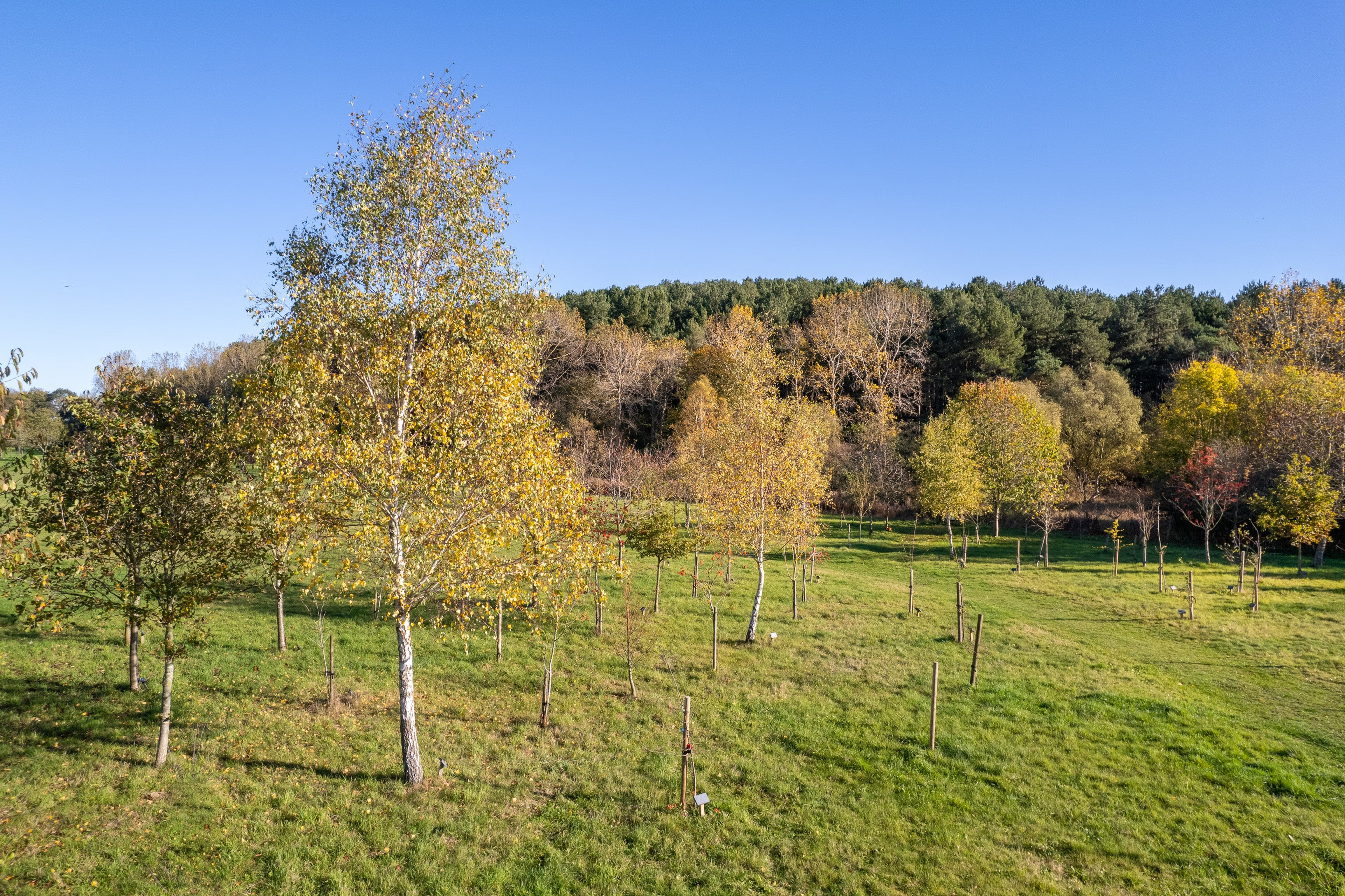27th September 2022
What to do with ashes after cremation?
By Tracey Gelder

When the funeral is over and everyone has gone home, you’re usually left with three things: memories of a difficult but ultimately rewarding and uplifting day shared with family and friends, the need for some serious sleep, and the ashes of your recently departed loved one.
The first should bring comfort, the second can be dealt with fairly easily, but the last can often pose a problem. Many are the tales of ashes left in a biscuit tin on a shelf for years because no one felt able to make a decision regarding what to do with them.
The danger there is that, at some point, someone unaware of the significance of the contents may decide that what they are looking at is rubbish that needs to be thrown away.
Here at Tithe Green, we run three natural burial sites in the East Midlands and have a number of suggestions as to what can be done when the dust has settled and you need somewhere to keep your dearly departed’s remains.
1. Bury the ashes
When we think of burial, our thoughts usually turn to a whole body being buried complete with coffin, but that doesn’t have to be the case. Ashes contained within a biodegradable urn or casket can equally be buried, perhaps with a memorial tree, headstone or plaque to mark the spot. Let’s look at a few common questions surrounding burying ashes:
What is the difference between ashes burial and interment of ashes?
While in many cases these can be the same thing, an ashes interment – unlike a burial – doesn’t have to involve placing the remains in the ground. It can involve having an above-ground spot. In either case, you’ll have somewhere you’ll be able to visit and remember your loved one.

Where can you bury ashes?
Understandably, you can’t just bury ashes anywhere. The only place you can do it without anyone else’s permission is on your own private property, but remember that if you do this, you might want to consider first whether you’re likely to be moving house at some point.
More common places for burying ashes include cemeteries, churchyards and natural burial sites like we have at Tithe Green.
What can I bury ashes in?
Ashes are often buried in urns or caskets, but basically, in most cases, you can bury ashes in whatever you like. However, it’s good to make sure that what you do use is not going to cause any damage to the local environment.
At Tithe Green, we only allow 100% biodegradable containers to be used in our woodland and meadow sites.
2. Scatter the ashes
Scattering ashes gives you far more choice regarding locations than you get with burial, with the potential for doing it somewhere that was deeply meaningful to the deceased.
Unlike burial, however, you won’t have a marked place to lay flowers on anniversaries, unless you have your loved one commemorated on the nearest park bench.
Where can I scatter ashes?
Ashes can be scattered wherever you like, as long as it’s your own property or in a public space, but usually people will choose somewhere that was special to the deceased. That could include parks, beaches, churchyards and woodland.
What are the rules and regulations for scattering ashes?
If you want to scatter ashes on someone else’s property, you will need to get permission. In theory, verbal permission is sufficient, but it’s probably wise to get it written to cover yourself.
If it’s a public space, there are no regulations in place, but it is sensible to have consideration for other members of the public in the area at the time.
Do ashes dissolve in water?
Human ashes are neither soluble (i.e. they don’t dissolve in water) nor bad for the environment. If you scatter them at sea, they are so small that they will safely disperse without any damage being done to the ecosystem.
The last – and perhaps most important – thing to remember about scattering ashes is that you should always do it with the wind behind you.
3. Keep the ashes
There are still many people who want to keep what remains of their loved one as close to them as possible, although many of those with someone’s ashes kept in the house may be doing so only because they haven’t got round to doing either of the options listed above yet.
How long do ashes keep for?
Ashes can essentially last forever. They don’t decompose or dissolve – at least not within any timeframe likely to affect you or several subsequent generations. So once you’ve placed them in your location of choice, you can be confident that a part of them will always be there for you to visit and remember.
Can I travel with ashes?
It’s advisable to check with your airline first, but there will usually be no problem taking ashes on a plane. It’s best to keep them in your hand luggage – sealed very tightly – and in a non-metal container that can be x-rayed.
You also need to check the regulations of the country you’re flying into, because different countries might need different paperwork. There are specialised courier companies that can sort this all out for you.
Where are some places I can keep ashes in?
Essentially, wherever you want to! You can keep them in a biscuit tin on the mantelpiece, a cardboard box in the attic, a decorative or antique urn on the hearth, or in a paperweight on your office desk. Just don’t forget where you’ve put them or to tell others sharing your living space what you’ve done.
At Tithe Green, you can inter your loved one’s ashes in our stunning woodland or wildflower meadow, which are easily accessible from Nottingham, Leicester and Peterborough.
Whichever site you choose, you’ll get a memorial plaque carved from Welsh slate to mark the spot, while if you choose the woodland site you’ll also get a memorial tree planted directly above the urn.
As previously mentioned, only 100% biodegradable urns and caskets can be used in our sites to help preserve the delicate ecosystem and protect the local wildlife.
Contact us now to find out more.

